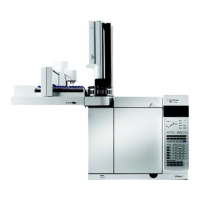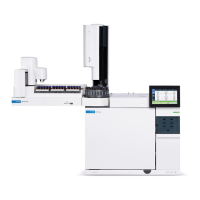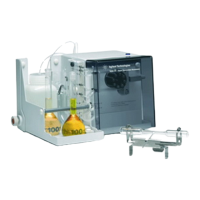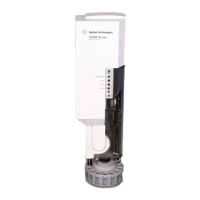44 Advanced User Guide
3 Inlets
Setup modes of the COC inlet
The COC inlet hardware must be set up for one of three usages,
depending on the type of injection and column size.
• 0.25 mm or 0.32 mm automated on-column. Use predrilled
septa.
• 0.53 mm automatic on-column or retention gap
• 0.2 mm manual
To select the correct hardware for a column and injection type,
refer to Maintaining Your GC.
Retention gaps
Because the sample is injected directly onto the column, it is
strongly suggested that a retention gap—or guard column—be
used to protect your column. A retention gap is a deactivated
column that is connected between the inlet and the analytical
column. If you choose to use one, it is suggested that at least 1 m
of retention gap be installed per 1L of sample injected.
Information on ordering retention gaps can be found in the
Agilent catalog for consumables and supplies.
If you are using a retention gap and are operating with the
column defined, the length of the retention gap could affect the
calculations for flow and velocity through your column. If your
retention gap is the same inside diameter as your column, it is a good
idea to add the retention gap and column length before entering the
number on the Configure Column parameter list. If the retention gap
inside diameter is larger than your column, this step may not be
necessary.
COC inlet temperature control
CryoBlast (optional)
CryoBlast shortens the cycle time between runs. If you have a
CO
2
or N
2
cryogenic valve and the CryoBlast feature, you can cool the
inlet to –37 °C in either the track oven or temperature program
modes.
The CryoBlast accessory uses coolant from the oven cryogenic
system.

